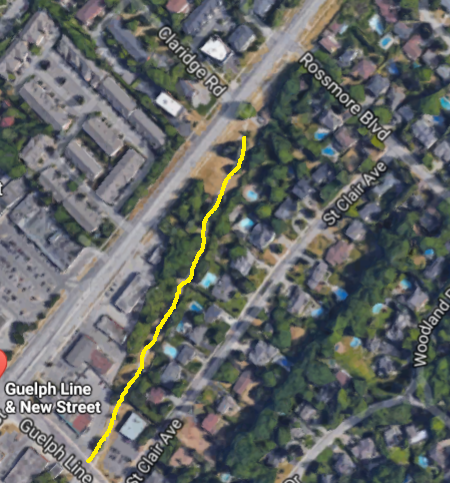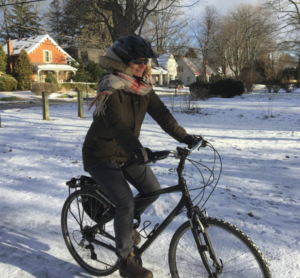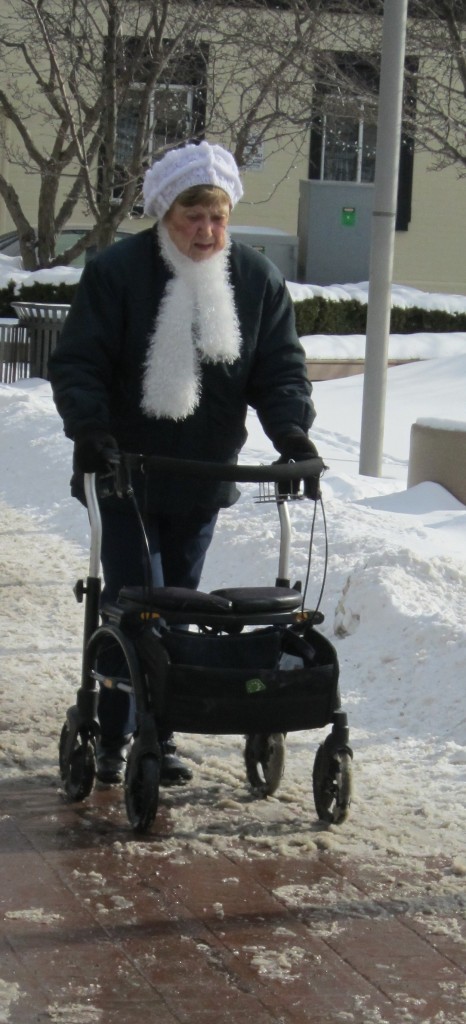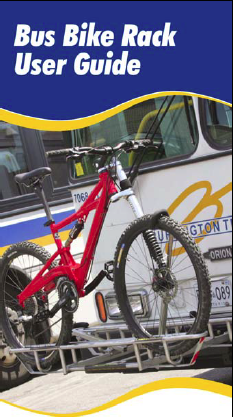 By Staff
By Staff
February 4th, 2018
BURLINGTON, ON
City Hall is inviting the public to share their thoughts and ideas about what would improve cycling in Burlington.
The feedback will be used to help shape the city’s new Cycling Plan which will guide the future of cycling infrastructure in the city.
Burlington is at a unique time in its history. In the past, growth has meant the development of new neighbourhoods but growth in the future looks very different for Burlington because our city has very little room left for traditional suburban-type development.

Cycling as the city seems to want to portray it. Is it a realistic picture?
Instead of growing out, Burlington City Council has made the decision to grow up and intensify in key urban areas. This direction, approved through the city’s Strategic Plan in April 2016, will enable Burlington to curb sprawl, protect the rural area and make efficient use of land and infrastructure.
The 2016 Census data shows Burlington grew by 7,535 people between 2011 and 2016 – a 4.3% overall growth rate. The provincial Places to Grow policy mandates that Burlington plan for a population of 193,000 by 2031, however, the city will reach this population number within the next few years.
As the city plans for future population growth with documents like the proposed new Official Plan and Mobility Hubs, it must also plan for how people will move through the city.
Over the last 30 years, Burlington’s transportation network has accommodated growth by building more roadways. This strategy is no longer sustainable. The city does not have the space to build new roadways and the financial cost to maintain a larger network of roads is significant.
A 21st century city is built around a different transportation model, one designed to provide people of all ages and abilities with more travel choices for things like walking, transit and cycling.
Burlington’s Cycling Plan was last updated in 2009. Since that time, the following cycling investments have been made:
Implementation of over 200 kilometers of on-road and off-road cycling infrastructure
 Four metre-wide multi-use paths paved along hydro corridors
Four metre-wide multi-use paths paved along hydro corridors
The New Street Pilot Project was an experiment to reduce road capacity and add on-road buffered bike lanes.
That idea didn’t work out; after considerable public reaction the city decided to abandon that initiative. What city hall learned was that is was going to have to be much more transparent when new initiatives are being brought forward.
Among current initiatives are:
Consideration given to include cycling facilities as part of all new road reconstruction projects with a preference for implementing on-road bike lanes
The use of bright green pavement markings at major intersections to clearly mark cycling lanes.
The new Cycling Plan will build on these successes and recommend new programs and policies that seek to provide safe, comfortable, and convenient routes for cyclists of all ages and abilities.
How do people feel about the use of bicycles. The graphic represents where public opinion was in 2009. Has it moved very much?

The Cycling Plan is now on the public engagement phase – gathering feedback that will be used to help shape the Cycling Plan.
What is confusing is the disparity between what city hall tells the public and what people see on the street. The city uses a photograph of a relatively young person on a bike in the winter.  At the same time city hall and all the members of council tell the public that Burlington is becoming a city of seniors and that the seniors population is where the population growth is taking palace.
At the same time city hall and all the members of council tell the public that Burlington is becoming a city of seniors and that the seniors population is where the population growth is taking palace.

This citizen isn’t smiling. Was she one of the hundreds that were basically locked in their homes during the five days of heavy winter weather because streets were not cleared?
Those seniors are for the most part not going to be riding bicycles. Pushing walkers is what we will see on the streets,
Opportunities to participate are available through an online survey open until Feb. 23, 2018.
https://luraconsulting.mysocialpinpoint.com/citythatcycles#/
There will be a series of Drop-In events throughout the community.
Staff will be showing up all over the city seeking input and reaction.
Monday, Feb. 5, 6:30 – 9 a.m. – Nelson Recreation Centre,
Friday, Feb. 9 6 – 8 a.m. Appleby GO Station,
Friday, Feb. 9 – 4 – 7 p.m. Mountainside Community Centre,
Tuesday, Feb. 13 – 7 – 9:30 a.m. – Tansley Woods Community Centre,
Wednesday, Feb. 14 – 6 – 8 a.m. – Aldershot GO Station,
Wednesday, Feb. 14 9:30 a.m. – 12:30 p.m. – Brant Hills Community Centre,
Saturday, Feb. 17 – 10 a.m. – 4 p.m. Mainway Recreation Centre
The number of Drop In events is impressive. These began at the end of January – six have taken place so far.
What the city has to learn is just how the public views the use of bicycles – are they a form of family exercise and part of the recreational plan or are they a form of transportation that will replace the car and at times be used instead of public transit.
The city has budgeted funds for where a cycling bridge over the QEW could best be located.
The Gazette is aware of one business person who keeps her bicycle in her office and uses it for short trips in the downtown core. You are not going to see this lady biking to Hamilton.

How heavily are the bike tacks on buses being used?
The extent of bicycle use the public is prepared to live with is the issue – hopefully city hall will not come up with any surprises. The information gathering has to follow the education part – a major shift is going to take place in the way people get around their communities – the car has been the mode of choice for the past three or four decades – that is going to change and the public will have to understand why.
Failure to do that will see another uproar that will equal the reaction to the 23 storey high rise opposite city hall and the plan to turn New Street into a road that would have few lanes for cars and lanes on either side of the road for bicycles.
The New street Road Diet kerfuffle.


















I didn’t place any icons on the map because of the terms and conditions.
I have been cycling around Burlington since the early 70s. There were a lot fewer cars then and even though lanes were narrower cars gave you more leeway. Now the mandated cycle paths at the side of the road, enforce common sense. It’s sad this is required. Still, I have had vehicles pass too close to me when I cycle. I’m not sure what those bike stencils in the middle of the road mean.
On the cars side, recently I saw two cyclists in all their racing gear riding side by side on Lakeshore holding up traffic using the bike land and the inner lane. And they didn’t even have a stencil in the middle of the road. Respect needs to be exercised both ways.
We recently travelled to several Baltic countries on a cruise. Bikes are everywhere in Stockholm, Helsinki, and Copenhagen. the most significant thing I noticed …they have their own separated bike paths, their own signs and lights. They own this section of the road and as a pedestrian you have to be really careful or you will be run down. They had massive lots to lock bikes up in the city core. Half the time in Burlington I’m lucky to find sign post to lock my bike to.
The one question that never was asked in this survey was – Would you consider cycling to be a mode of transportation or recreation?
It also was interesting that the first part of the survey asked participants to put together a cycling route.
The questions were based on the premise that everyone wanted a cycling plan. Personally I would much prefer to see a public transit plan. Good public transportation would benefit all residents year round.
There is a quantum difference between cycling on a residential street like Spruce Avenue versus cycling on a major road like Appleby Line. The consequences of errors increases exponentially depending on how busy the road is, weather conditions and the time of day and year.
Not all cyclists are trained or equipped to ride on a major road, just as not all drivers are naturally adept at driving all type of vehicles. My drivers’ licenses doesn’t permit me to drive a school bus or an 18 wheeler because I haven’t been trained. There are courses, licensing and regulations in place to ensure people who drive these type of vehicles possess the requisite skills and abilities. The same should apply to cyclists. If a bicycle is considered a vehicle under the Ontario Highway Traffic Act then licensing provisions should apply.
“The city does not have the space to build new roadways.”
Not entirely new roads but it certainly has the space to expand many of the existing ones. All major roads in Burlington are configured around being able to be expanded to three lanes in each direction if needed. This is obvious when looking at the bridges over the 407 on Brant Street, Upper Middle and Guelph line, all are 6 lanes wide and the easements are already large enough along those routes. The city would have us believe that no more expansion is possible so they the can push their unrealistic plan for cycling and walking forward while chronically under funding transit.
Please note I am not saying that all the majors need to be 6 lanes wide for their entire length just that the space exists and that as the city grows in population the number of cars will be increasing no matter what the city seems to want us to believe. These lane expansions are coming at some point in the future whether the current city councillors and staff believe it or not, their plan to make traffic so bad that citizens will demand dedicated bus lanes and start hoping on their bikes in the middle of January is farcical and doomed to failure.